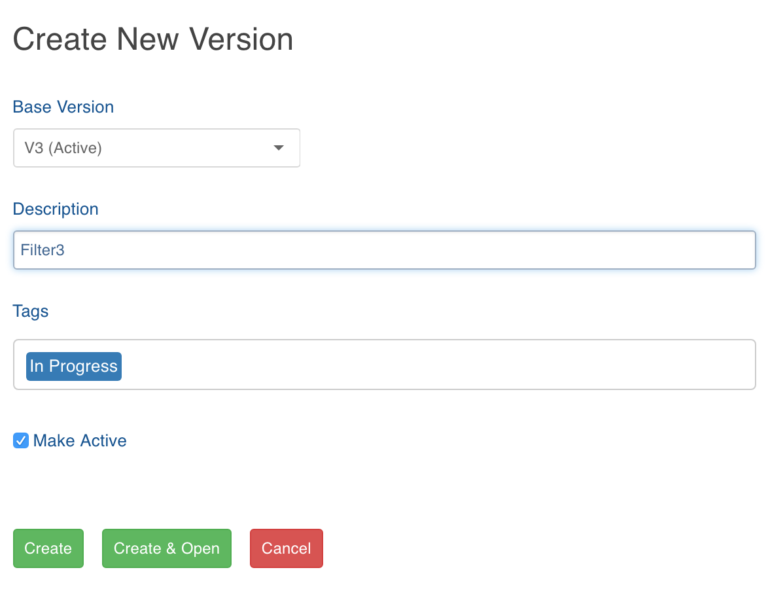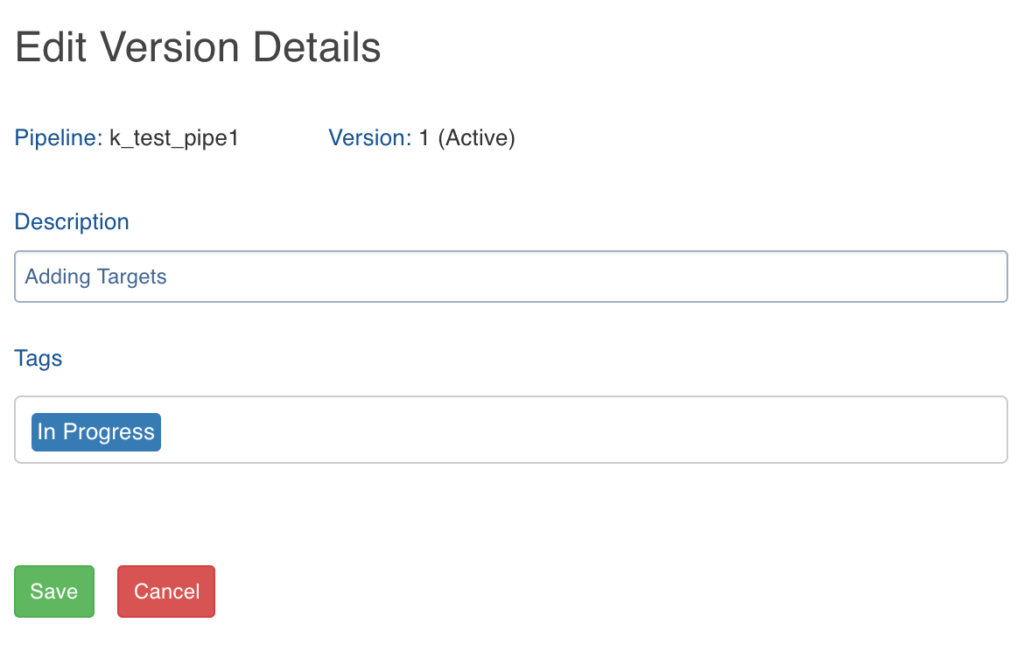The pipeline versioning feature enables you to save intermediate state of pipelines by creating multiple versions. It also allows you to restore snapshots of the intermediate actions when required.
Pipeline versioning includes the following operations:
- creating multiple versions of a pipeline
- building specific versions
- maintaining history of pipeline
NOTE: In pipeline versioning, metadata is versioned and not the pipeline table data. When a version is built, the existing table data will be replaced.
You can perform the following:
- Create a new version or overwrite an existing version. By default, all the changes are stored in the working version.
- Set a version as active. By default, the active version will be loaded when you navigate to a pipeline.
- Remove a version, except a read only or active version.
Creating Version
Following are the steps to create a version:
- Click the Create New Version button.
- Enter the base version (the metadata of which will be copied to the new version being created), description, tags and enable the Make Active check box to make the version active.
- Click Create or Create and Open.

Editing Version
Following are the steps to edit a version:
- In the pipeline version editor page, click the Version Actions option and click Edit Version Details.
- Edit the Description and Tags.

- Click Save.
Pipeline Audits
The Pipeline Audits option displays a list of version activities performed on the pipeline like creating version, removing version and making version active. It contains the information about the version action, user, and timestamp.
Read Only Mode
If you open a pipeline version which is already accessed in another tab or window by you or any other user, the version will be in Read Only mode which can neither be configured nor removed. However, you can create a new version from the read-only version.